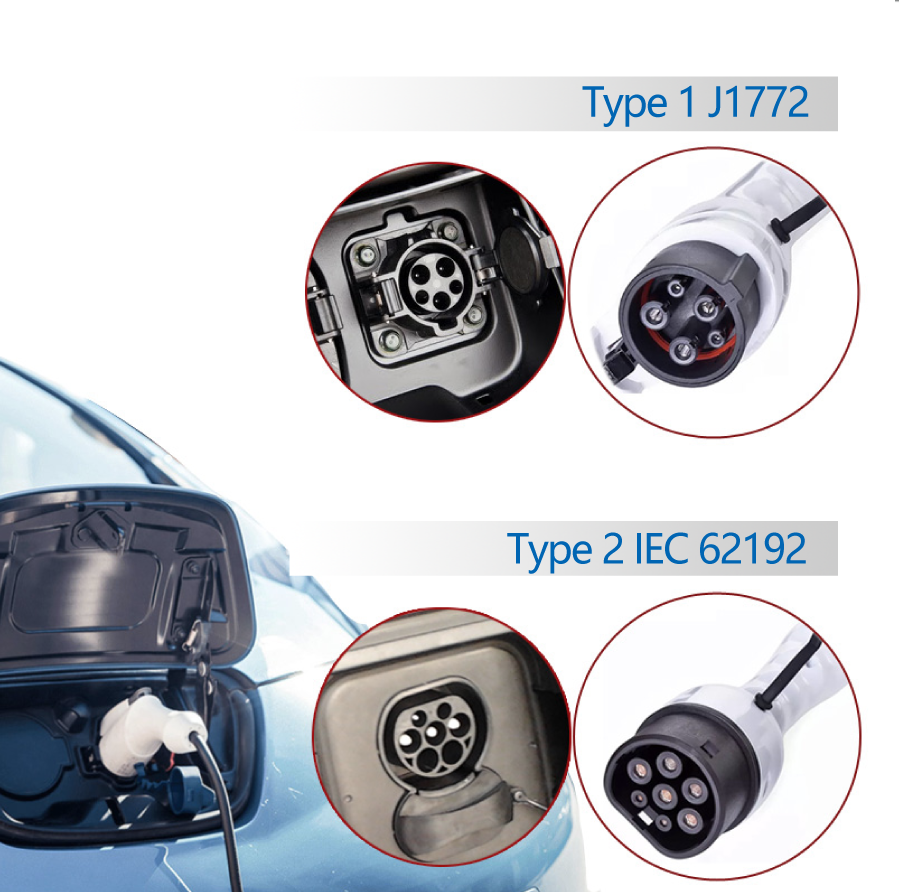How to choose the EV Charger between AC slow charging and DC fast charging?
First of all, the fast charging and slow charging interfaces of electric vehicles correspond to the DC and AC interfaces, and the DC is fast charging and AC is slow charging. In general, there are 5 ports for fast charging and 7 ports for slow charging. In addition, fast charging and slow charging can also be seen from the charging cable, and the charging cable for fast charging is relatively thicker. Of course, some electric vehicles manufacturers have only one charging mode due to various considerations such as cost and battery capacity, so there will only be one charging port.
Fast charging is what we called DC charging. Generally speaking, the DC voltage of fast charging will be greater than the battery voltage. Generally, 80% of the capacity can be reached in half an hour, while slow charging takes a long time, and it may take more than six hours to fully charge the battery. At the current level of technology, although the battery can charge the battery to 80% within 30 minutes, the remaining 20% must reduce the current to limit the charging power to ensure battery safety and life.
Because fast charging stores direct current directly into the battery, the requirements for fast charging on the battery are very high. The power of direct current is very large. During charging, electrons are accelerated to flow from the positive electrode to the negative electrode. Therefore, long-term or frequent fast charging will cause Causes the temperature of the battery pack to rise, and the battery decays faster.
The charging process is that the electrons inside the battery move from the positive electrode to the negative electrode. In the fast charging mode, the flow rate of the electrons increases, which may cause the battery to heat up too fast, which may not be able to charge in a balanced manner, which is also common when we usually charge mobile phones. The "virtual battery", and fast charging will reduce the life of the battery because it causes a certain burden on the battery.
The slow charge uses alternating current, and the current and power are relatively small. Although the charging time will be longer, it has a good guarantee for the life of the battery and the electricity cost will be relatively low. However, fast charging does not necessarily cause serious damage to the battery. After all, most battery factories will be equipped with a battery management system when developing a battery system, which will be provided to everyone when the battery is safe. The charging current and power of slow charging are relatively small, and the battery life is better, and the charging cost is low when the power consumption is low.
The charging speed of an electric car is closely related to the power of the charger, the charging characteristics of the battery and the temperature, but it is important to remember that no matter how perfect the battery is, the long-term fast charging will eventually affect the service life of the battery. You don’t need to worry too much about the occasional fast charge.
Under the current battery technology level, it takes 30 minutes to charge to 80% of the battery capacity even if it is fast charging. After 80% is exceeded, the charging current must be reduced to 100% to protect the battery safety. The time will be longer.

Related Products
Submitted successfully
We will contact you as soon as possible



